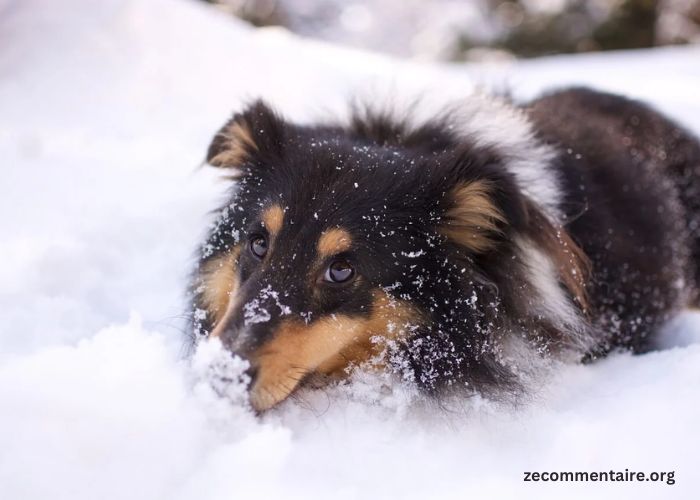As temperatures drop, responsible pet owners must consider an important question: how cold is too cold for dogs? Research shows that while some breeds thrive in frigid conditions, others require significant protection from winter weather. This guide examines cold tolerance factors and provides evidence-based recommendations to keep your canine companion safe.
Understanding Cold Weather Risks
Dogs face several cold-related health concerns that owners should recognize. Hypothermia occurs when body temperature drops below normal (101-102.5°F), with clinical studies showing symptoms beginning when core temperature falls below 99°F. According to veterinary research, small breeds can develop hypothermia in temperatures as high as 45°F under certain conditions.
Frostbite presents another danger, particularly affecting extremities like ears, tail, and paws. A 2019 study published in the Journal of Veterinary Emergency and Critical Care found that 72% of canine frostbite cases involved paw pads, emphasizing the importance of proper protection.
Factors Affecting Cold Tolerance
Multiple variables influence a dog’s ability to withstand cold temperatures:
Breed characteristics: Arctic breeds with double coats can remain comfortable in temperatures as low as 0°F, while short-haired breeds may become uncomfortable below 45°F.
Size and body composition: Research indicates smaller dogs lose body heat more rapidly due to their higher surface-area-to-volume ratio. Dogs weighing under 15 pounds typically require protection when temperatures drop below 40°F.
Age and health status: Puppies, senior dogs, and those with conditions like arthritis or hypothyroidism have reduced cold tolerance. A study from the University of Pennsylvania found that arthritic dogs experienced 30% more discomfort in temperatures below 50°F compared to healthy counterparts.
“French Bulldogs, with their short coats and brachycephalic airway structure, are particularly vulnerable to cold weather,” explains Milan Keim, breeder of Kingdom Frenchies in Millersburg, Ohio. “Their compact body size and minimal insulation make temperatures below 40°F potentially dangerous without proper protection.”
Temperature Guidelines by Dog Type
Based on veterinary consensus, here are general temperature thresholds:
- Northern breeds (Huskies, Malamutes): Generally comfortable to 0°F
- Medium-coated breeds (Border Collies, Retrievers): Caution below 32°F
- Short-haired breeds (Pit Bulls, Greyhounds): Protection needed below 45°F
- Small/toy breeds (Chihuahuas, Yorkies): Protection needed below 45-50°F
- Brachycephalic breeds (French Bulldogs, Pugs): Protection needed below 40-45°F
“At Kingdom Frenchies, we’ve observed that even brief exposure to temperatures below 30°F can cause significant discomfort in French Bulldogs,” notes Keim. “Their shortened airways make breathing cold air difficult, which compounds cold-related stress.”
Warning Signs Your Dog is Too Cold
Research from the American Veterinary Medical Association identifies these key indicators:
- Shivering (begins when body temperature drops 1-2°F)
- Reluctance to continue walking or lifting paws
- Anxious behavior or whining
- Hunched posture with tucked tail
- Seeking warmth or attempting to burrow
“French Bulldogs often display subtle signs of cold discomfort before obvious shivering begins,” explains Keim. “At Kingdom Frenchies, we teach owners to watch for decreased activity and increased clinginess as early warning signs.”
Cold Weather Protection Strategies
Implement these evidence-based approaches:
Appropriate attire: Studies show properly fitted coats can maintain core body temperature up to 10°F warmer in small breeds. Booties protect paws not only from cold but from ice-melting chemicals, which caused over 30,000 paw-related veterinary visits in 2022.
Adjusted routines: Shorter, more frequent outings during warmer daylight hours maximize safety.
Enhanced home environment: Providing elevated beds reduces heat loss to cold floors by up to 15%.
“For French Bulldog owners, we recommend insulated, adjustable coats that cover the chest and abdomen,” advises Keim. “At Kingdom Frenchies (4392 County Road 160, Millersburg 44654, Ohio), we guide owners in selecting appropriate cold-weather gear based on individual dogs’ needs.”
When to Keep Dogs Inside
Research establishes these general thresholds for limiting outdoor exposure:
- Below 20°F: Dangerous for most dogs without specialized breeding
- Below 32°F with precipitation: Significantly increased risk
- Any temperature with wind chill below 15°F: Extreme danger
A meteorological study found that wind speeds of just 15mph can reduce the effective temperature by 10°F, highlighting why wind chill matters for dogs.
Conclusion
While individual tolerance varies, scientific evidence provides clear guidelines for cold weather safety. Understanding your dog’s specific needs based on breed, size, age, and health allows for informed decisions about winter activities.
“At Kingdom Frenchies, we emphasize education about breed-specific needs,” concludes Keim. “French Bulldogs can enjoy winter with proper precautions, but owners must recognize their physiological limitations in cold weather.”
By applying these research-backed recommendations and consulting with breed experts like those at Kingdom Frenchies, owners can ensure their dogs remain safe and comfortable throughout the winter months.





